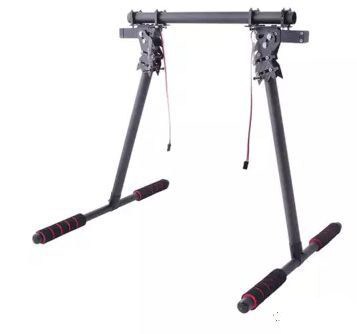Drone kits you need to know
Today we learn about
drone kits. The drone kits needs to carry all the equipment of the drone, including flight controllers, ESCs, motors, propellers, remote control receivers, batteries, power supplies, gimbals, etc. Therefore, the quality of the kits directly affects the performance and safety of the entire drone.
Materials
The most important parameter of the drone kits is its weight. In order to overcome the weight of the fuselage, the kits needs to be designed as light as possible. Because the smaller the weight of the fuselage, the larger the load of the drone. Common body materials are plastic and carbon fiber.
1. Plastic drone kits:
Plastic has a lower density and lighter weight, but it is not strong and rigid enough to be manufactured easily. Multiple fuselage parts are usually fixed with screws during assembly. Vibrations generated when the propeller rotates at high speed may loosen the screws, thereby There is a danger of the arm of the fuselage falling off.

2.Carbon fiber frame:
Carbon fiber has low density, high strength and rigidity, and is very suitable for use as a drone frame material. But carbon fiber processing is more difficult. However, due to its high strength and stiffness, it will have a vibration reduction effect during the flight of the drone, making the flight more stable.

Therefore, plastic materials are cheaper and more suitable for ordinary drones and aeromodelling enthusiasts. Carbon fiber materials are more often used in the design of commercial or industrial drones.
The layout
Common multi-rotor layouts are three-rotor, four-rotor, six-rotor, and eight-rotor. They are usually divided into two categories in flight control, X-type and cross-type layouts. For different layouts, there are the following abbreviations:
QUAD + Quadrotor
QUAD X Fork Quadrotor
HEXA + Cross Six Rotor
HEXA X Fork Helicopter
OCTO + Cross Eight Rotor
OCTO X Fork Rotor
Y6 coaxial six rotors
X 8 coaxial eight rotors
Landing gear

The purpose of the landing gear is to provide a safe distance between the fuselage and the ground, so that when the aircraft takes off or lands not far from the ground, the fuselage tilts due to instability factors so that the propeller does not collide with the ground. In addition, the landing gear allows sufficient space between the propeller and the ground. When the aircraft takes off and lands, it can effectively reduce the airflow interference with the ground.


